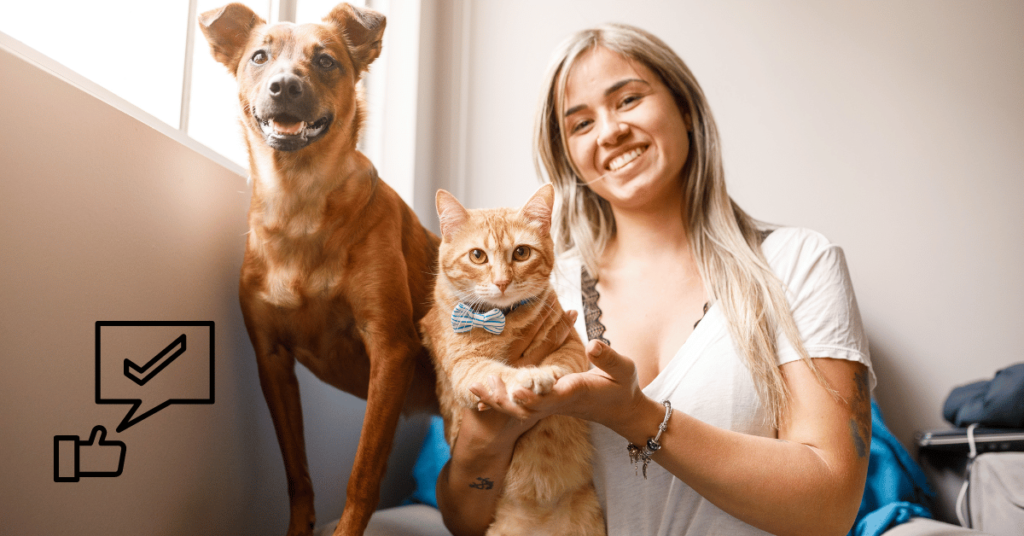Pet insurance is often marketed as a way to protect yourself from expensive veterinary bills, offering peace of mind if your pet falls ill or gets injured. However, while this coverage can be valuable in certain situations, it can also be costly. So, how do you decide whether pet insurance is worth it for your furry family member? Let’s explore the pros and cons of pet insurance, what it covers, and whether it makes sense for your situation.
What Is Pet Insurance?
Pet insurance functions similarly to health insurance for humans, but it covers your pets. The idea is to help manage the often unexpected costs of veterinary care when your pet falls ill or gets injured. The average cost of vet care can add up quickly, with routine treatments and emergency procedures running into thousands of dollars.
With pet insurance, you typically pay a monthly premium, and when your pet needs care, the insurance reimburses a portion of the bill, depending on the plan you choose.
Types of Pet Insurance
There are three primary types of pet insurance plans, each offering different coverage levels:
1. Accident-Only Coverage
This plan covers only the costs related to injuries or accidents. For example, if your pet breaks a bone or swallows something harmful, this type of insurance will cover the treatment costs.
2. Accident and Illness Coverage
This is a more comprehensive option that covers both accidents and illnesses, including chronic conditions such as diabetes or cancer. It’s the most popular choice for pet owners looking for more extensive protection.
3. Wellness Coverage
Wellness coverage focuses on preventive care, such as routine check-ups, vaccinations, and dental cleanings. It helps manage regular expenses but is often not included in standard plans unless added on.
What Does Pet Insurance Cover?
The specifics of what’s covered by pet insurance depend on the type of policy you choose. Generally, most policies cover:
- Veterinary bills for accidents or illnesses
- Emergency surgeries
- Treatment for hereditary or chronic conditions (in comprehensive plans only)
What’s Not Covered?
While pet insurance can help cover many expenses, it does not cover everything. Here are some common exclusions:
- Pre-existing medical conditions
- Preventive care (unless you have a wellness plan)
- Services related to pregnancy and breeding
- Grooming, dental cleanings (in accident-only or illness plans)
- Experimental treatments
How Pet Insurance Works
Once you have a pet insurance plan in place, you will pay for the vet visit upfront and then submit a claim to your insurer for reimbursement. The insurance company typically covers a percentage of the bill, such as 70%, 80%, or even 90%, depending on the policy. However, you are responsible for any deductible, co-pays, or costs beyond the policy’s coverage.
Pros of Pet Insurance

1. Saves You Money on Major Vet Bills
If your pet suffers from a serious illness or requires emergency surgery, the costs can quickly spiral into thousands of dollars. Pet insurance helps cover these expensive treatments, potentially saving you from financial strain.
2. Provides More Treatment Options
Having insurance gives you the freedom to choose more comprehensive treatment options, knowing that part of the expense will be covered. Without insurance, you may be limited by your budget.
3. Helps You Plan for Pet Care Costs
By paying a fixed monthly premium, you can better budget for your pet’s healthcare expenses, rather than facing unpredictable, large vet bills all at once.
4. Covers Hereditary or Chronic Conditions
For breeds prone to certain hereditary conditions, like hip dysplasia or epilepsy, pet insurance can cover treatments once the condition develops, offering long-term financial relief.
Cons of Pet Insurance

1. May Cost More Than You Get Back
For many pet owners, especially those with healthy pets, the premiums paid over the years may exceed the costs of any treatments. Pet insurance is more beneficial for those with pets that experience major health issues.
2. Deductibles, Co-pays, and Exclusions
Many plans include out-of-pocket expenses, such as deductibles or co-pays, which can add up. Moreover, certain types of care, like preventive treatments, may not be covered unless you have a separate wellness plan.
3. Pay Upfront, Get Reimbursed Later
Most pet insurance plans require you to pay for vet services at the time of treatment and submit a claim for reimbursement later. This could be a disadvantage if you don’t have the funds upfront to cover an emergency bill.
4. Premiums Increase Over Time
As your pet ages, the likelihood of health problems increases, and so do your insurance premiums. The older your pet gets, the more expensive your monthly payments will become.
5. Excludes Pre-Existing Conditions
If your pet already has a medical condition when you purchase insurance, that condition will likely be excluded from coverage. This is why it’s crucial to enroll your pet in insurance when they are still young and healthy.
Does Pet Insurance Make Sense for You?
Here are some scenarios where pet insurance might be a good idea:
- You don’t have significant savings to cover unexpected vet bills.
- Your pet is young and healthy, so you can get coverage before any pre-existing conditions arise.
- You have an active pet that is at a higher risk of accidents.
- Your pet is a breed prone to genetic health issues.
On the other hand, pet insurance might not be worth it for you if:
- Your pet is older and already has existing health problems.
- You have enough savings to cover unexpected vet expenses.
- You are comfortable with the idea of not pursuing costly treatments in the case of a severe health issue.
Conclusion
Pet insurance can be a valuable tool for some pet owners, especially those worried about affording expensive medical treatments for their furry friends. However, it’s not always necessary for everyone. By weighing the pros and cons carefully and considering your financial situation and your pet’s health, you can determine whether pet insurance is the right choice for you.
So that was all about this article. If you have any further questions feel free to comment down below. We are always here to help you!




